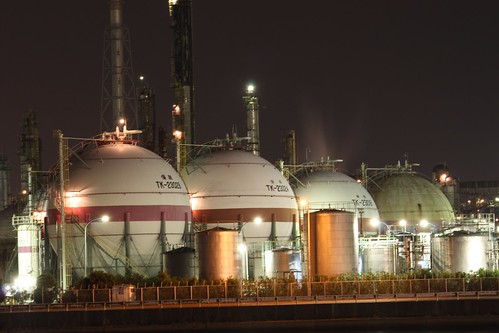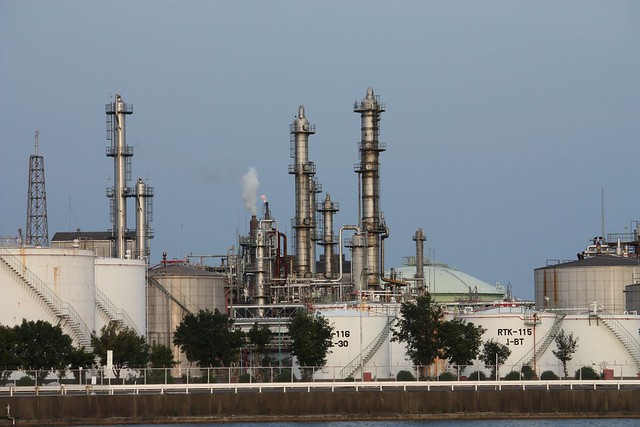The Planet Money podcast - which continues to be excellent, even now that we're (maybe?) out of the economic apocalypse and there's no longer a pressing need to explain what a
credit default swap is - takes a crack at tallying the price tag for dead pelicans in the Gulf:
This is a practical problem right now as we figure out how much we should fine BP for its spectacular oil spill. What's a fair price to put on the damage? In some cases, that's pretty easy to figure out: we can multiply the x tourists who won't be visiting oily beaches this summer by the y dollars they might have spent at seaside hotels and beach towns, and then we can add in the loss of p tons of commercial seafood, which would normally sell for q dollars per pound.
But how do you calculate the value of rescuing an oily pelican? Unlike shrimp and hotel rooms, there's no market for most of the Gulf's wildlife.
One strategy is to ask people how much they'd be willing to pay to save one pelican. Animal rescue groups, for instance, are spending about $500 on each bird they save. That tells us that each pelican is worth at least $500 among bird enthusiasts, who may well be willing to pay even more than that. But presumably most people aren't ready to cough up that much money to save one bird.

Broadening this approach gets into the economic method of contingent valuation, which was first employed on a large scale to figure out the damages caused from the Exxon Valdez spill in 1989. In this method, economists deliver surveys to a broad swath of the population - including people who will never see a pelican in the flesh - to ask them if they would be willing to pay $X dollars to save one bird. As with any product, values will differ: some people will say "no" to paying $2, while others will say "yes" to paying $100. But with enough responses, economists can construct a demand curve, and figure out the equilibrium where the marginal cost of saving one more bird is just equal to society's marginal benefit.
So, if there are 20,000 people in the world who say they're willing to pay at least $500 to save one pelican, and it costs $500 to save each pelican, then BP should pony up $10 million to save 20,000 pelicans.
This method, too, is controversial. Its biggest problem is that it's too abstract - it's easy to tell a survey-taker that you'd pay $500 to save a pelican, but if the opportunity actually presented itself, would you really postpone your credit card payments to save one bird?
Even for environmentalists, it's a problematic question. Most would probably argue that we, as a society, should spend $10 million to save birds, right? But what if that means that we, as a society, will no longer be able to afford to spend $10 million on a solar energy project, or to conserve a wilderness area from development? Is the immediate plight of few thousand pelicans in the Gulf more important than shutting down a coal plant, or preserving a wild forest?

When I studied environmental economics in college and administered contingent valuation surveys about Oregonians' values of wild salmon in a seminar with
Dr. Noelwah Netusil, there were a number of campus activists in my classes who bristled at any notion of putting an economic value on wildlife. Preserving the environment was a moral imperative, in their view, and it needed to be done without regard to the cost. They also criticized its anthropocentrism: how dare we impose our human values, and the structures of a social science, on a natural system that had been around for billions of years before Adam Smith?
That's a nice sentiment, and it may even be an honest reflection of their personal values - they may well have been willing to sacrifice everything they owned for wild salmon.
But it's not realistic for society as a whole. Economics is about managing scarcity, and dedicating our limited resources to achieving the best outcomes. Homo sapiens isn't the only species that practices economic calculations. A wolf makes hunting decisions based on whether the expected value of a meal is worth the cost of running to catch it; plants allocate energy and resources to roots or leaves depending on the respective values of nourishment from the soil or from the sun.
In the 21st century, environmentalists have no shortage of demands on their time and money, and our time and money are scarce resources. The view that everything in nature is sacred and has infinite value is not productive. It's preventing individuals and organizations from setting priorities and winning victories.
At some point, we'll need to stop worrying about the pelicans and start paying those workers to build solar panels and public transit lines, instead of using toothbrushes to get oil out of feathers.



























